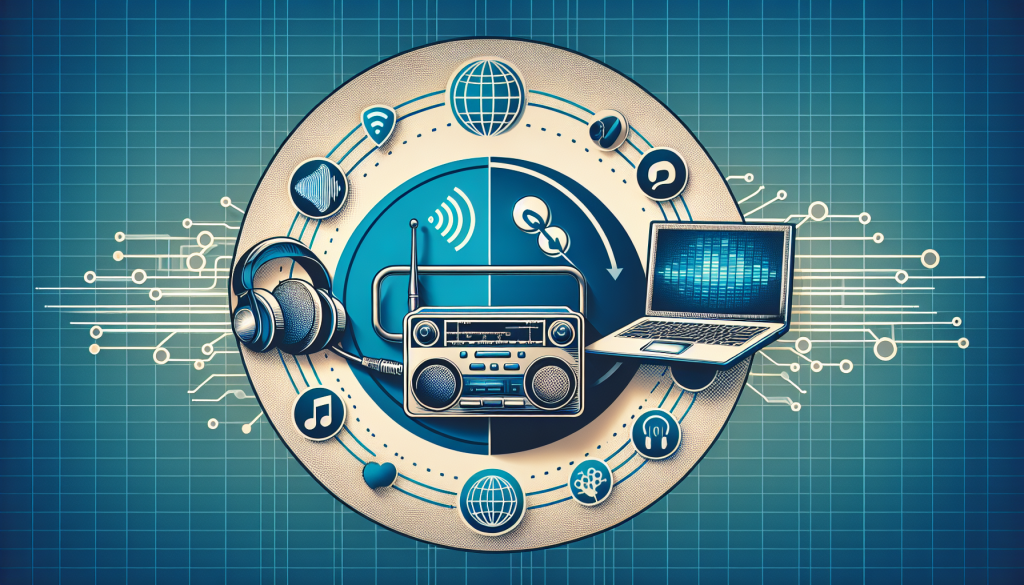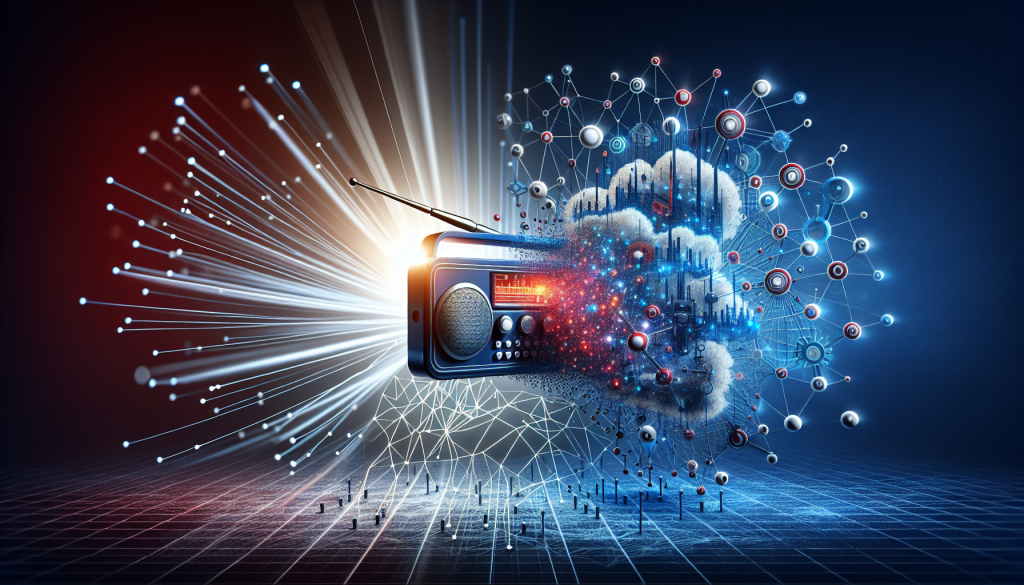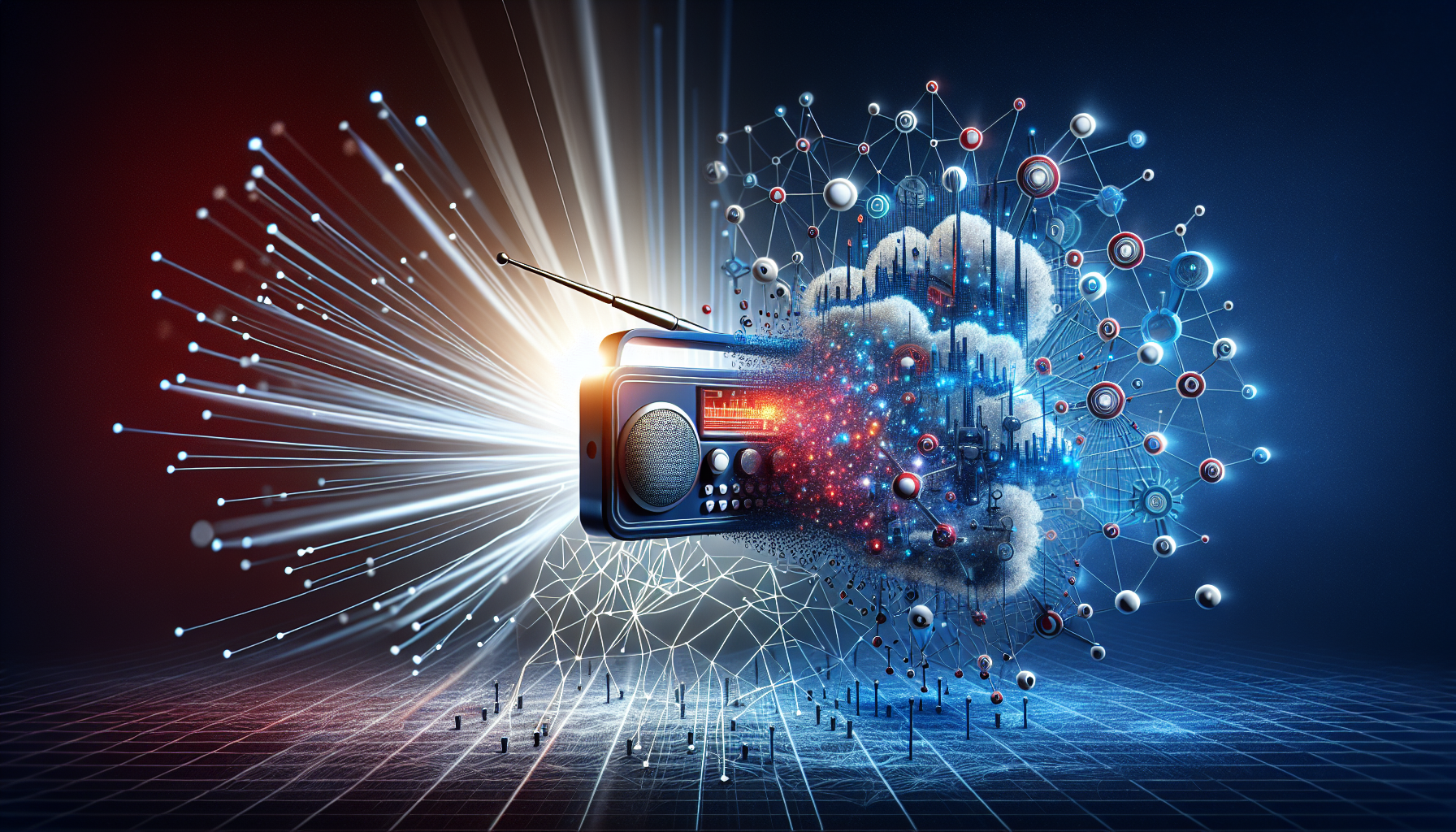Does DAB Radio Need Internet?
Imagine having access to hundreds of radio stations from around the world, all at your fingertips. No more static-filled signals or limited local options; with DAB radio, the possibilities are endless. But here’s the twist: does DAB radio need the internet to function?
In this article, we will explore the fascinating world of DAB radio and its increasing reliance on the internet to stream content.
Get ready to uncover the pros and cons as we navigate through this modern-day dilemma. So, fasten your seatbelts, and let’s embark on a digital radio adventure like no other.

What is DAB Radio
DAB radio, short for Digital Audio Broadcasting, is a radio broadcasting technology that offers superior sound quality and improved reception compared to traditional analog radio. It delivers audio content in a digital format, allowing for more efficient use of spectrum and enabling broadcasters to transmit more channels and content.
Definition
DAB radio works by converting audio signals into digital data, which is then transmitted through a network of terrestrial transmitters. Unlike analog radio, which uses frequency modulation (FM), DAB radio uses a technique called multiplexing, where multiple radio stations are combined into a single transmission signal.
Upon receiving the DAB signal, the digital data is decoded by a DAB radio receiver, which can be a standalone device or integrated into cars or other audio systems. The receiver then converts the digital data back into audio signals, resulting in clearer sound quality without the hiss and interference often experienced with analog radio.
Advantages
The adoption of DAB radio brings several advantages to both broadcasters and listeners. Firstly, it offers a wider range of channels and content compared to traditional radio. With DAB, broadcasters can transmit more stations, allowing for greater choice and variety in programming.
This means you can access a diverse range of music genres, talk shows, news stations, and even niche content that may not be available on analog radio.
Additionally, DAB radio provides improved sound quality. The digital transmission eliminates static and interference commonly found in analog radio, resulting in clearer audio and a more enjoyable listening experience. The sound is crisp and detailed, allowing you to fully appreciate the music, conversations, and other content being broadcast.
Moreover, DAB radio offers enhanced functionality compared to its analog counterpart. Many DAB radios include features such as station presets, text display, and scrolling information, making it easier to navigate and interact with the available channels. Some models also support alarm functions, allowing you to wake up to your favorite radio station.
Overall, DAB radio provides a host of benefits, including a wider choice of content, improved audio quality, and enhanced functionality. However, like any technology, it also has its limitations that need to be addressed.
DAB Radio’s Limitation
While DAB radio offers many advantages, it is important to acknowledge its limitations to better understand the role of the internet in enhancing the DAB radio experience.
Lack of Internet Connectivity
One of the primary limitations of traditional DAB radio is the lack of internet connectivity. DAB radio relies solely on terrestrial transmitters to broadcast its signals, meaning you can only access content that is being transmitted through the airwaves. This restricts the availability of online-only stations and prevents real-time access to internet-based content.
Limited Channels and Content
Another limitation of DAB radio is the limited number of channels and content available compared to the vast array of options available online. While DAB radio offers more channels than traditional analog radio, it still falls short of the extensive variety found on the internet.
This can be particularly limiting if you have niche preferences or enjoy exploring a wide range of content beyond what is available on mainstream radio stations.
However, with the advent of internet-enabled DAB radios and the integration of streaming and on-demand services, these limitations are being addressed, paving the way for a more comprehensive and diverse listening experience.
Role of Internet in DAB Radio
The integration of the internet with DAB radio has revolutionized the way we consume and interact with radio content. Internet-enabled DAB radios, also known as hybrid radios, combine the advantages of traditional DAB radio with the flexibility and accessibility of online content.
Internet-Enabled DAB Radios
Internet-enabled DAB radios take advantage of Wi-Fi or Ethernet connectivity to access online content in addition to the terrestrial DAB signal. This allows you to listen to a wider selection of stations, including online-only stations, podcasts, and streaming services. These radios often come equipped with a display interface that enables you to browse and select content from the internet, creating a more interactive and personalized listening experience.
Streaming and On-Demand Services
The integration of streaming and on-demand services has further enhanced the capabilities of internet-enabled DAB radios. With services like Spotify, Apple Music, and BBC Sounds, you can listen to your favorite playlists, catch up on missed shows, and explore a vast library of on-demand content directly from your DAB radio.
This convergence of traditional broadcasting and online streaming offers greater convenience and choice for radio listeners.
By leveraging the internet, DAB radio expands beyond the limitations of terrestrial broadcasting, opening up a world of possibilities and transforming the way we consume radio content.
Benefits of Internet on DAB Radio
The integration of the internet brings several benefits to the realm of DAB radio.
Increased Channel Capacity
One of the significant advantages of internet-enabled DAB radios is the increased channel capacity. While traditional DAB radio offers a larger selection of channels compared to analog radio, the addition of internet connectivity allows for even more channels to be accessed. This expanded capacity means you have a broader range of stations to choose from, catering to diverse music tastes, regional programming, and specialized content.
Access to Online Content
Internet-enabled DAB radios not only provide access to traditional radio stations but also enable access to online-only stations. These stations often offer unique perspectives, niche genres, and independent content that may not be found on mainstream radio. By combining the traditional DAB signal with internet access, you can explore a wider spectrum of radio content, allowing you to discover new artists, participate in online communities, and diversify your listening experience.
Podcasts and Catch Up Services
The integration of streaming and on-demand services on internet-enabled DAB radios opens the door to a world of podcasts and catch-up services. Podcasts have gained immense popularity in recent years, providing a platform for in-depth conversations, storytelling, and niche information.
DAB radios with internet connectivity allow you to listen to your favorite podcasts without the need for an additional device or app. Furthermore, catch-up services enable you to access previously broadcasted shows or segments at your convenience, ensuring you never miss out on your favorite content.
By incorporating the internet into DAB radio, these benefits enhance the overall listening experience, allowing for greater customization, convenience, and access to a diverse range of content.

Challenges of Internet on DAB Radio
While the integration of the internet offers numerous benefits to DAB radio, it also presents certain challenges that need to be considered.
Technological Requirements
To fully utilize the internet on DAB radios, a reliable internet connection is necessary. This means you need access to a stable Wi-Fi network or a wired Ethernet connection. While this is usually not an issue in home or office settings, it can be a challenge for portable or in-car DAB radios, especially when traveling in areas with limited internet coverage. However, advancements in mobile data networks and the availability of public Wi-Fi hotspots help mitigate this issue to some extent.
Reliability and Stability
The internet also introduces potential reliability and stability issues. Unlike traditional DAB radio, which relies on consistent terrestrial broadcasts, internet connectivity can be affected by factors such as network congestion, signal interference, or outages.
This may result in interruptions or buffering when accessing online content. It is important to ensure a stable and robust internet connection to minimize such disruptions and enjoy a seamless listening experience.
Cost Implications
The integration of internet connectivity in DAB radios may entail additional costs. While traditional DAB radios require only a one-time purchase, internet-enabled DAB radios may involve ongoing internet fees or subscription costs for streaming services.
Additionally, the need for a reliable internet connection may require investing in equipment such as Wi-Fi extenders or Ethernet adapters. It is essential to consider these cost implications when deciding whether to opt for an internet-enabled DAB radio.
Despite these challenges, technological advancements, improved infrastructure, and changing consumer preferences are driving the convergence of DAB and internet technologies to overcome these limitations.
Internet-Only Radio: A Threat to DAB?
The rise of online streaming has led to the emergence of internet-only radio stations, presenting a potential threat to traditional DAB radio.
Rise of Online Streaming
The availability and popularity of online streaming services, such as Spotify, Pandora, and Apple Music, have transformed the music industry and the way we consume music. These platforms offer a vast library of songs, personalized playlists, and social sharing features, catering to individual preferences and creating a highly personalized listening experience. As a result, some listeners may opt for these internet-only streaming services over traditional DAB radio, posing a challenge to the future of DAB.
Competition with Traditional DAB Radio
The increasing availability of internet-only radio stations, podcasts, and streaming services directly competes with traditional DAB radio. Listeners now have a multitude of options, ranging from traditional broadcast stations to online-only stations, creating a highly fragmented radio landscape. Broadcasters and DAB radio providers must adapt to changing consumer habits and preferences to stay relevant.
Synergies and Integration
Rather than perceiving the internet as a threat, DAB radio and internet technologies can be integrated to create synergistic solutions that combine the strengths of both platforms.
Hybrid Radio Models
Hybrid radio models, such as RadioDNS and RadioDNS Hybrid Radio, represent a convergence of DAB and internet technologies. These models enable seamless switching between traditional DAB broadcasts and online streams, providing a continuous listening experience. Hybrid radios automatically switch to the online stream when the DAB signal is weak, ensuring uninterrupted playback. This integration allows broadcasters to expand their reach beyond traditional DAB coverage areas and provide listeners with a seamless transition between terrestrial and online content.
Combining DAB and Internet Services
By combining DAB radio with internet services, broadcasters have the opportunity to offer an enriched and immersive listening experience. This could include the ability to view additional information about songs, artists, and programs, access interactive features, or participate in live discussions with other listeners.
The integration of social media platforms and personalized recommendations can further enhance the sense of community and engagement among listeners.
Through synergies and integration, DAB radio can leverage the internet to overcome limitations, compete with internet-only radio, and offer an enhanced and interactive listening experience.
Developments and Future Trends
The rapid advancement of technology continues to shape the future of DAB radio and its relationship with the internet.
Improvements in DAB Technology
DAB radio technology continues to evolve, with ongoing efforts to improve sound quality, reduce transmission costs, and enhance reception. Advanced audio codecs, such as DAB+, offer superior audio quality with improved efficiency, allowing broadcasters to transmit more channels within the available bandwidth. Ongoing research and development aim to make DAB radios more affordable, smaller in size, and energy-efficient, ensuring wider accessibility and adoption.
Integration of 5G and DAB
The integration of 5G technology with DAB radios holds significant promise for the future. 5G networks promise faster and more reliable internet connectivity, enabling seamless streaming of high-quality audio content. The combination of 5G and DAB can enhance the capabilities of hybrid radios, providing ubiquitous coverage, reduced latency, and improved user experience. This integration opens up possibilities for new interactive services, such as real-time voting or interactive advertising, further blurring the boundaries between radio and other digital platforms.
Evolution of Internet-Connected Radios
Internet-connected radios are becoming increasingly prevalent, with smart speakers and voice-controlled devices gaining popularity. These devices not only offer access to internet radio stations but also provide additional functionalities such as voice assistants, smart home integration, and personalized content recommendations. The evolving landscape of internet-connected devices presents opportunities for DAB radio to seamlessly integrate with these platforms, ensuring compatibility and expanding reach.
Consumer Preferences and Adoption
Understanding consumer preferences and adoption patterns is crucial in shaping the future of DAB radio and its relationship with the internet.
Demand for Internet Connectivity
Consumer demand for internet connectivity in DAB radios continues to rise. Listeners increasingly seek the convenience and flexibility of accessing online content alongside traditional radio broadcasts. The ability to personalize and customize their listening experience, discover new music, and access a wide range of content is of paramount importance to today’s consumers. As such, integrating internet connectivity in DAB radios is seen as a key driver of user adoption and market growth.
User Behavior and Expectations
Consumer behavior and expectations have shifted with the advent of on-demand content and personalized experiences. Today’s listeners expect seamless access to high-quality audio content on multiple devices, across different platforms. They seek interactive features, immediate access to trending programs, and the ability to discover new content through personalized recommendations. Addressing these expectations in combination with delivering traditional broadcasting benefits is critical in ensuring the relevance and future viability of DAB radio.
Conclusion
In conclusion, the integration of the internet with DAB radio has the potential to revolutionize the way we consume and interact with radio content. While traditional DAB radio offers superior sound quality, increased channel capacity, and improved reception compared to analog radio, it does have limitations, such as the lack of internet connectivity and limited content options.
By embracing internet-enabled DAB radios and leveraging streaming and on-demand services, the limitations of traditional DAB can be overcome. The combination of traditional DAB broadcasts with online content provides listeners with a wider selection of stations, access to online-only content, and the ability to explore podcasts and catch-up services.
Despite challenges such as technological requirements, reliability, stability, and cost implications, the integration of the internet and DAB radio presents exciting opportunities.
Hybrid radio models and the combination of DAB and internet services create synergies that expand the listening experience, allowing for seamless switching between terrestrial and online content and providing interactive features and personalized recommendations.
The future of DAB radio lies in the continued advancements in DAB technology, the integration of 5G networks, and the evolution of internet-connected devices.
By embracing consumer preferences for internet connectivity, addressing user expectations for personalized content, and striking a balance between traditional and online radio, DAB radio can remain a relevant and indispensable medium in the ever-evolving world of audio consumption.




